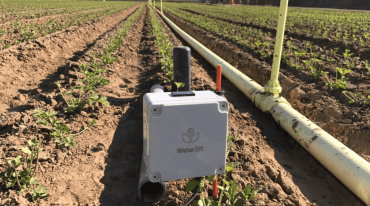
DataOps is an emerging set of agile practices, processes, and technologies for building and enhancing data and analytics pipelines to better meet business needs.
Data keeps increasing every second of every day, giving us a potential treasure trove of information to choose from for analytical purposes. But more times than we care to admit, analytics stalls out due to a variety of data issues. We’re not sure what data we have access to, where the data comes from, or if it is trustworthy.
In an ideal world, we could have on-demand access and confidence in the data on hand, both for overall enterprise analytics and specific project insights to make business decisions that keep us ahead of competitors. The reality is the growing number of data sources, platforms, and applications have created significant data congestion and roadblocks in most organizations.
The massive amount of data produced, collected, and managed should create a healthy data environment for better understanding of customers, products, and markets – but we keep falling short.
A New Approach to Data
In facing this challenge, enterprises need an antidote that helps break down existing information silos and data congestion. What’s needed is a comprehensive way to understand and use the proper tools, technologies, and skill sets that address the constant changes in data. DataOps is just the approach to take.
DataOps embraces the dynamic nature of data, allowing enterprises to uncover better ways to develop and deliver real-time analytics. Following in the footsteps of the DevOps methodology, DataOps is an emerging set of agile practices, processes, and technologies for building and enhancing data and analytics pipelines to better meet business needs.
See also: DataOps-Experienced Data Pipeline Engineers Critical to Streaming Analytics
While some firms claim that there is a single technology solution, DataOps acknowledges the answer can’t be found only in ordering a certain number of seats or licenses. It’s is a full discipline approach, driven by a mindset that embraces looking at and managing data differently. DataOps, at its core, is a methodology that aims to streamline all the elements that affect data operations to increase business outputs, implementing processes and various technologies that support this new outlook and data principles.
Moving at the Speed of Change
Businesses now have instant access to news and information from the internet and social media, and business users want to operate at work the way they do at home – with instant access to data. This requirement demands a more integrated and efficient approach to data versus the semi-regular, batch approach around which many businesses are architected.
It’s become clear that companies that want to – or are starting to – operate at the speed-of-change can win by having the right information and analysis at the right time. As enterprises try to catch up with the speed-of-data movement and manage the complexity of their own environments, it’s become that much harder to improve data availability. The increasing bottlenecks are a prime driver for the adoption of DataOps. The raw and various incoming data sources need to be shaped and formatted, and there needs to be less friction between people providing the data and the people using it to make decisions.
DataOps changes the rules of the game by supporting the data-focused enterprise, accelerating the time to insight, and solving many of the challenges associated with data access and use. The methodology focuses heavily on improving communication, integration, and automation of data flows across the organization. It brings together agility, continuous integration, and testing while adding a communication layer to increase collaboration between data owners, database administrators, the data engineers who are building out pipelines and processes, and the data consumers. The result is finally getting real-time data that will benefit the whole organization.
Progressive enterprises are using modern data architectures to help manage the ever-expanding volumes of data. Leveraging platforms such as the cloud, which give enterprises agility, flexibility, and greater efficiency is the foundation that, when combined with data integration tools, can automate data delivery and processes with appropriate levels of security, quality, and metadata. When DataOps is added into the mix, organizations create the internal alignment that with the right technology supports real-time data analytics and collaborative data management approaches.
The adoption of the DataOps helps accelerate the time-to-insights and addresses how to handle the wide variety and velocity of data. However, the methodology by its nature will raise questions, such as what is needed to operate at the speed of change successfully?
The Keys to DataOps Success
DataOps holds great promise in its ability to transform data processes. For DataOps to succeed, enterprises must follow a few technology requirements.
The first requirement is continuous data integration. It is the base for modern data platforms and the key to achieving real-time data analytics. Rather than the traditional ETL approach and batch view that moved data on a weekly or sometimes monthly manner, DataOps needs a constant integration of incremental data changes. This means applying technologies like change data capture (CDC), that when done correctly eliminates the need for source system installation. It’s a non-invasive way to capture changes in data and metadata from transactional systems, relational databases, mainframe systems, and applications and stream those to where they need to be in the data pipeline process.
It is paramount for enterprises to select a universal solution, one that will support various platforms and allow the change data capture process to operate from a source and a target perspective, which will help when delivering and refining data where and as needed. This allows the database to be replicated, enabling the move to cloud-based data warehouses and data lakes for cost savings and agility while providing data pipelines to support real-time movement.
For DataOps to succeed, automation is also essential. The implementation of modern platforms like cloud and data lakes are happening in the enterprise, and automating the data pipeline ensures efficient generation, delivery, and refinement of data while delivering analytics subsets to different business users. By automating heterogeneous and distributed workloads, we provide users with trusted information that will help them make the best decisions at the right time.
Organizations need to factor in agility when adopting new technologies and implementing new data pipelines. Solutions must run where needed, whether it is in the cloud, on-premise or in hybrid environments to maintain the pace of “architectures in motion,” which refers to the constant change in platforms and data formats. Flexible CDC provides agile, modern infrastructures that make an enterprise future-ready, offering the right data loads to address business user requirements.
The final piece to consider is trust, one of the most important aspects of DataOps and which comes from metadata. Users should be able to know where the data comes from, how it was transformed, and when and who changed it. This is achieved with technologies such as a data catalog, which helps users find data quickly. It also provides data lineage, which is crucial since it provides users with the context to help understand where the data was captured, how it was transformed, and confirms validation. Such information gives users confidence that all data movements were successfully recorded correctly.
Clear Data Roads Ahead
Although it is in its infancy, adopting DataOps will alleviate many of the data related congestion issues that keep organizations from leaping the competition, while helping to reduce the time and the cost of delivering analytics-ready data to more analytics users.
When executed successfully, DataOps allows enterprises to improve productivity, streamline and automate processes, increase data output, and create greater collaboration across teams, enabling the business to operate at the speed of change.





























